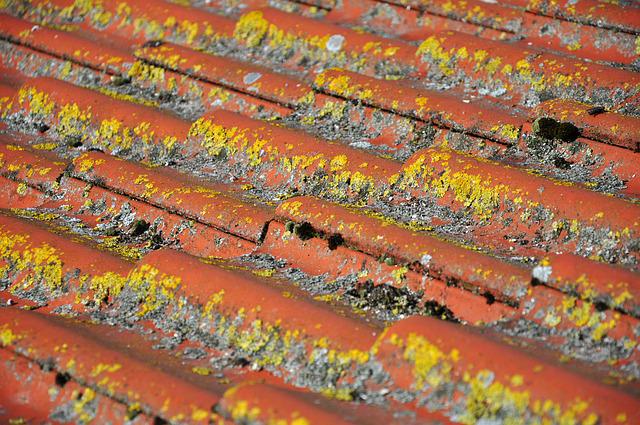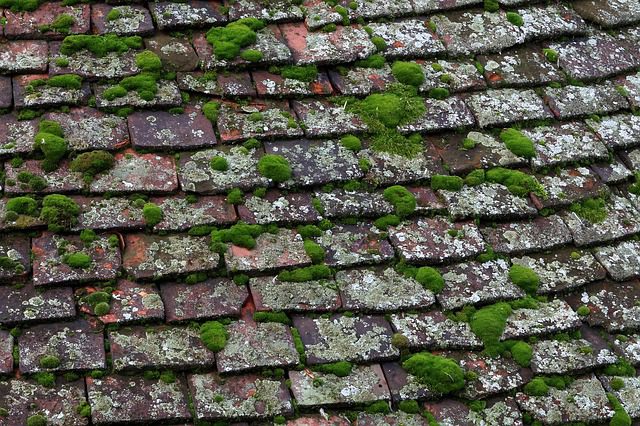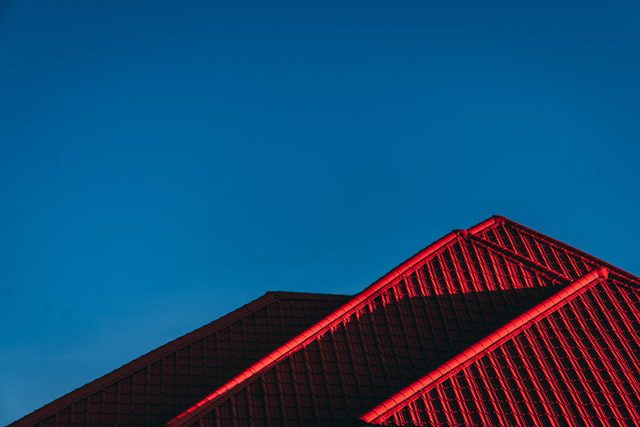
Roof tile may be restored to its original color and attractiveness via regular cleaning, and this maintenance also helps prevent cracking, chipping, and other forms of roof tile deterioration. Unfortunately, many homeowners avoid cleaning their tile roofs because they worry it may damage the tiles or are unsure how often or how regularly they should wash their roofs.
Using a pressure washer, gently clean the tile roof every other year, or more often if necessary, to get rid of dirt, dust, algae, lichen, and other debris.
Using a pressure washer safely and successfully is more complex than many believe, and standing on a wet roof is risky for those who aren't educated. However, this labor is necessary to guarantee a tile roof looks its best. Pressure washing may be dangerous, so it's best to let the pros do it.
Tile roof cleaning is essential, so before you put it off for another month or perhaps a year, consider why that is. It is also helpful to take notice of the warning signals that indicate a roof cleaning is necessary, as well as some pointers on how to execute the work correctly.
How often should tile roofs be cleaned? This depends on a few factors and the manufacturer's recommended washing methods and frequencies. This being, you may consult with a local pressure washing professional about your alternatives, safe in the knowledge that your property will always be in pristine shape and looking its best.

Consider the following reasons why a tile roof requires cleaning and the consequences of ignoring this vital work in order to fully appreciate the significance of doing roof washing on a regular basis. Whether you hire a local roof washing service, they will be able to tell you if there are any particular threats to your roof from not cleaning it as often as is recommended.
| Tile cleaning | How to |
| Safety first! | Wear protective clothing Wear shoes with a good grip Walk delicately on the tiles (Use areas where tiles overlap) Don't walk backward when on the roof Ensure your ladder is sturdy and fixed to the ground |
| Cleaning | Brush off any dirt and debris like leaves Use minimal pressure on a hose or pressure washer Clean gutters and downspouts Use a gentle cleaning agent to remove moss or a roof cleaner for tiles. |
| Protection | Apply a protective sealant |
Call a local power washing company focusing on gentle wash pressure washing if you want your tile roof cleaned properly. Your tile roof cleaning expenses may be far lower than you think if you hire a professional power washing firm to do the job.
Wearing protective equipment, such as shoes with adequate grip and safety eyewear, is a must if you plan on cleaning your tile roof on your own. Keep in mind that the spot where the tiles overlap is the strongest part of the roof, and work there whenever possible.
You should schedule your work so that you don't have to walk on the roof when it's wet, and you should stretch out the cleaning over several hours or even two days if necessary so that one portion of the roof may dry completely and provide a safe walking surface.
Get started with a little water spray on your tile roof to loosen and wash away any loose dirt, dust, or other debris. When spraying off the roof or an eave with gutters, direct the material into the downspouts.
If you have roof tiles and need to remove moss, mold, algae, lichen, or any other biological development, you should use a roof cleaner made specifically for roof tiles. For some, dilution and waiting several minutes after application may be necessary so that they may penetrate the roots and spores of the growths in question.
The recommended starting pressure for rinsing is just a fraction of the force of a regular garden hose spray nozzle, or around 60 psi. Put in the time it takes to guarantee that all weeds and pesticides are removed thoroughly. Rinse everything toward the gutters, as you did with the first spray, and then rinse the gutters themselves to prevent soil and debris from splashing onto the grass and exterior walls.
A new layer of sealant should be considered just after a tile roof has been cleaned. The sealants protect the roof tiles from the damaging effects of the sun, wind, and rain, as well as the grit and dust in the air. Using a sealant after having your roof cleaned may help the tiles retain their vibrant color for much longer, making your property seem new.
The typical tile roof should be cleaned during the first five years following installation and then every other year or every three years thereafter. There are a lot of reasons why your property could require more frequent tile roof cleaning than the typical biannual cleaning.
Moss and algae, for instance, are more likely to take over a house in the tropics or other extremely wet regions. Moss and other biological development may be eradicated with annual cleaning, keeping the area free of obstructions all year long.
Areas with high dust levels, such as those near factories and building sites, may require more frequent house cleaning. If you put off tile roof cleaning for several years, layers of dried dust and other debris may build up, posing a fire hazard and reducing your property's exterior attractiveness.
The installation of an outdoor kitchen, a particularly severe storm, or a neighbor's renovations that kicked up a lot of dust can also be to blame for the mess on your roof. Do not put off tile roof cleaning or any other necessary power washing services for any reason.

If you want to maintain your roof in good shape and look its best, regular tile roof cleaning is a great option, but you can also decrease debris on your roof by pruning back tree limbs, especially if they hang directly over your roof.
Leaves, twigs, seeds, moss, sap, acorns, needles, and other similar residues are dropped onto a roof. The trees themselves provide a roosting spot for birds, whose droppings are caustic, destructive, and aesthetically unpleasant.
Regular power washing services may help keep your property cleaner and less contaminated by dust and grime from surrounding factories, building sites, and roads. Your home's roof is at greater risk if thicker layers of dirt are on the walls and driveway.
When moss, mold, and other growth are allowed to establish and spread along the outside walls and below the roof eaves, they can eventually find their way to the roof. Roof moss and algae may be prevented by regular pressure washing, gutter cleaning and brightening, and other property washing to remove residues and destroy mold spores.
Keeping your roof clean is now considered standard practice for property owners. All roofing professionals recommend cleaning and maintaining your roof regularly. Maintaining a clean roof, clearing out the gutters at least once a year, and fixing any damaged or missing shingles will all help your roof last for many more years.
Keep in mind, though, that most roofing experts will tell you to hire a contractor to clean and maintain your roof. In a nutshell, they have the knowledge and gear necessary to securely traverse your roof. Roofs that have accumulated moss, fungus, and wetness can be hazardous to walk on and require special precautions when working on.
Many theories exist for determining how frequently you should clean your roof. Keeping an eye on your roof's health will pay you in the long run by extending its useful life and preventing costly repairs. What sort of cleaning is required depends on the roof's material composition.
The age of your roof and whether or not it has been damaged by severe weather are other important considerations, as are the number and kind of trees in your immediate vicinity.
Concrete tiles often have a rough, brushed appearance and come in popular shapes like flat and barrel or s-tile, which take a long time to dry when wet. Thus, it needs to be cleaned more often every two or three years.
Within roughly five years, you'll want to clean your brand-new tiles for the first time. Erosion of the finish caused by pressure washing might result in a higher maintenance schedule. Even though asphalt composite shingles tend to be more brittle than concrete tiles, they shouldn't need to be cleaned for at least seven years. When wet, these shingles dry off significantly more quickly.
Pressure washing, whether at low or high levels, will strip away the protective sand and gravel coating, exposing the tar paper underneath to the sun's scorching rays and irreparably damaging the surfaces.
The prolonged drying time required following rainfall facilitates mildew development, making the paper dry and brittle. Roof algae development can lead to unsightly black streaks and splotches.
Modern Exteriors professionals would be happy to provide you and your household with a free quote. Whether you need a roof replacement or repair, be assured that Modern Exterior offers reliable solutions to any problem.
Scraping the moss, algae, and debris off roof tiles by hand is simple but very laborious. Remove the moss and debris from the tiles by scraping them with a trowel or similar instrument. Mold and other debris are easier to remove off tiles on dry days because they don't have to compete with moisture.
Tile roofs are incredibly long-lasting, but they still need routine care to keep them in top shape. Repairing damaged flashing, replacing cracked tiles, and cleaning the roof of algae, mildew, and moss are all essential maintenance tasks that will ensure its continued beauty and durability for years to come.
About 60 years of age. Despite variations in the sand or coatings used in production, most roof tiles may be anticipated to have a similar lifespan of roughly 60 years since the production process is so uniform among manufacturers.
Make sure the tiles are totally dry before walking on them to avoid slipping and hurting yourself. When working on a steep roof, it's important to use a safety harness that will keep you from sliding off.
Sneakers and other shoes with a soft rubber sole are preferable to heavier shoes or boats because they reduce the risk of breaking and provide greater grip on the tile floors.
Roofing tile leaks can be caused by poor installation, low-quality tiles, improper top flashing, lack of maintenance, or simply the passage of time. Identifying the root source of the leak before attempting a repair is important, as this will determine how the leak is fixed.
Any roofing or exterior construction material, such as wood, concrete, or stone, is at risk of being dried out and damaged by chlorine bleach. Oxidized bleach, on the other hand, seldom causes harm and is far less drying and harmful.
Consult a local roof cleaning service if you need advice on the appropriate cleaner and moss killer for your home's roof.